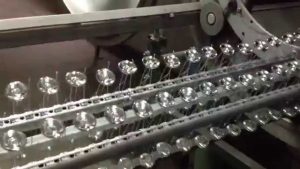The properties of vacuum metallization are seen everywhere – from refrigerators to high-end designer products.
 Vacuum metallization continues to be used for a variety of commercial and residential industries. The process of vacuum metallization is performed by combining a metal with a non-metallic substrate through the process of evaporation. Now, the most common material used in today’s industry is aluminum because of its low-cost, reflective properties, and thermodynamic advantages that it brings to a coating.
Vacuum metallization continues to be used for a variety of commercial and residential industries. The process of vacuum metallization is performed by combining a metal with a non-metallic substrate through the process of evaporation. Now, the most common material used in today’s industry is aluminum because of its low-cost, reflective properties, and thermodynamic advantages that it brings to a coating.
Aesthetic Finishes
Vacuum metallization is performed for a variety of reasons. For aesthetic purposes, it can add a nice finish to a product. The metalized substrate that creates the film can add a reflective finish that can be used with other processes to enhance the decorative look of the product. Additionally, through the use of a PVD system, one can dye the film to provide another unique look to the substrate. If you’ve ever wondered how certain products have such a unique and high-end appearance, it’s because of vacuum metallization.
Vacuum Metallized Surfaces for Insulation
The process of vacuum metallization is perform to increase the functionality of the substrate that is being coated. Furthermore, this makes it great for insulation purposes, primarily because of its increased reflective purposes. For commercial and residential fields, there are radiant barrier reflective insulation materials involved that are created through the process of vacuum metallization.
To sum it up, vacuum metallization is a process that is continuously used in a variety of industries. Its ability to increase the substrate’s functionality has essentially provided a unique way for industries to flex their versatility.
For ion beam assisted deposition equipment and other ophthalmic products, visit Denton Vacuum, LLC today. Trust the folks at Denton Vacuum, LLC to find you the finest quality equipment for your thin film deposition needs.
